Sep
30
2022
 By now you have likely seen the images of NASA’s DART spacecraft smashing into the asteroid, Dimorphos, a small asteroid in orbit around a larger asteroid, Didymos. Here is the streaming video from DART itself, showing right up to the moment of impact. Many telescopes were focused on this event, including (for the first time) both the Webb and Hubble space-based telescopes. Why did NASA deliberately crash a spacecraft?
By now you have likely seen the images of NASA’s DART spacecraft smashing into the asteroid, Dimorphos, a small asteroid in orbit around a larger asteroid, Didymos. Here is the streaming video from DART itself, showing right up to the moment of impact. Many telescopes were focused on this event, including (for the first time) both the Webb and Hubble space-based telescopes. Why did NASA deliberately crash a spacecraft?
DART stands for “double asteroid redirect test” – it is designed to test a system for redirecting the path of an asteroid by smashing stuff into it. It’s a double asteroid because Dimorphos and Didymos are a double asteroid system. DART included a DRACO camera – Didymos Reconnaissance and Asteroid Camera for Optical navigation, used to support the SMART-nav system – Small-body Maneuvering Autonomous Real Time Navigation (SMART Nav). NASA loves its acronyms. Part of the DART test was to see if these systems worked, if the craft could successfully navigate itself precisely enough to score a direct hit on a tiny asteroid. It did.
But also NASA wanted to see the results, and this is where Webb and Hubble come in, as well as many ground-based telescopes. They wanted to image the composition and speed of the ejecta. Specifically – would DART kick off a cloud of fine powder, or would larger chunks of rock break off the asteroid? When redirecting an asteroid the last thing we would want to do is create a debris field of large chunks of rock. Which brings us to the overall goal of the mission, to protect the Earth from an asteroid impact.
Asteroid impacts are inevitable, with large impact increasingly rare, but they do occasionally happen. Just ask the dinosaurs, except you can’t because they were all killed by an asteroid impact. Statistically it will likely be a long time before a biosphere-killing asteroid hits the Earth again, but it will likely happen eventually. There can also be smaller, but still catastrophic, asteroids headed our way, ones large enough to take out a major city, cause a devastating tsunami, or even threaten a continent. We don’t have to wait helplessly while a killer asteroid head our way. We can push it into a different trajectory, so that it safely misses us.
Continue Reading »
Sep
29
2022
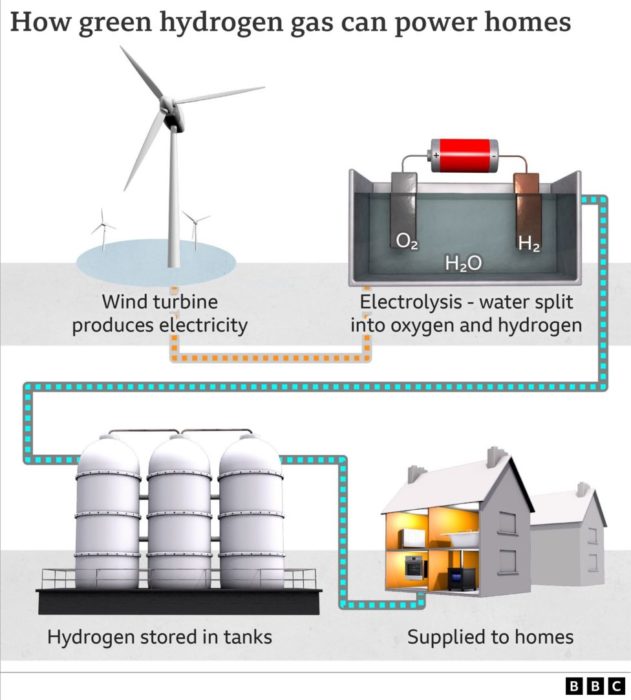 Examining the history and fate of many technologies, and reading the analyses of others, I have come to understand some general rules, one of which is that some technologies look great on paper, but are terrible in reality. The reason they look so promising at first is because they have some key advantage that just seems to make sense. Using hydrogen as an energy storage medium, I think, is one of those technologies (at least for some applications). The idea of hydrogen is very appealing – it can be stored as a gas, transported in pipelines, and burned for energy, combining with oxygen to make water as the only combustion product. No CO2 or other greenhouse gas is produced. That sounds really good. But the more you crunch the numbers, the less good hydrogen looks (at least with current technology). Researchers recently did just that, looking at the utility of hydrogen for heating homes. Their assessment was soundly negative.
Examining the history and fate of many technologies, and reading the analyses of others, I have come to understand some general rules, one of which is that some technologies look great on paper, but are terrible in reality. The reason they look so promising at first is because they have some key advantage that just seems to make sense. Using hydrogen as an energy storage medium, I think, is one of those technologies (at least for some applications). The idea of hydrogen is very appealing – it can be stored as a gas, transported in pipelines, and burned for energy, combining with oxygen to make water as the only combustion product. No CO2 or other greenhouse gas is produced. That sounds really good. But the more you crunch the numbers, the less good hydrogen looks (at least with current technology). Researchers recently did just that, looking at the utility of hydrogen for heating homes. Their assessment was soundly negative.
The idea is that hydrogen would be produced by electrolyzing water, using excess energy from intermittent sources like solar and wind. That hydrogen can be stored, and then supplied to homes when needed for heating. This would replace fossil fuels for heating, which would have multiple advantages (especially if you happen to live in Europe during a conflict that reduces your fossil fuel supply). But when you take a closer look, the shine fades. Jan Rosenow, the report’s author and Europe Director at the energy think-tank the Regulatory Assistance Project, had this to say:
“However, all of the independent research on this topic comes to the same conclusion: heating with hydrogen is a lot less efficient and more expensive than alternatives such as heat pumps, district heating and solar thermal,”
The simple reason for this is that hydrogen is just expensive. Using hydrogen for heating would cost six times using a heat pump, which is an existing proven technology. Any money spent doing further research and development into a hydrogen heating infrastructure would be better spent simply subsidizing heat pumps. These systems can be a bit expensive to install, but they are cheap to run, very energy efficient, and do not directly burn fossil fuels.
Continue Reading »
Sep
26
2022
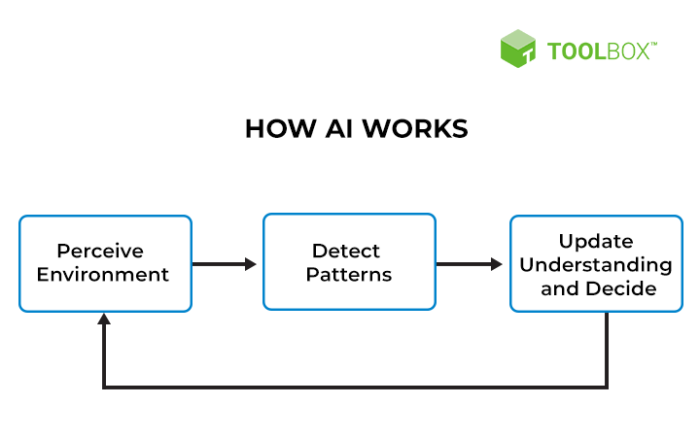 We appear to be in the middle of an explosion of AI (artificial intelligence) applications and ability. I had the opportunity to chat with an AI expert, Mark Ho, about what the driving forces are behind this rapid increase in AI power. Mark is a cognitive scientist who studies how AI’s work out and solve problems, and compares that to how humans solve problems. I was interviewing him for an SGU episode that will drop in December. The conversation was far-ranging, but I did want to discuss this one question – why are AIs getting so much more powerful in recent years?
We appear to be in the middle of an explosion of AI (artificial intelligence) applications and ability. I had the opportunity to chat with an AI expert, Mark Ho, about what the driving forces are behind this rapid increase in AI power. Mark is a cognitive scientist who studies how AI’s work out and solve problems, and compares that to how humans solve problems. I was interviewing him for an SGU episode that will drop in December. The conversation was far-ranging, but I did want to discuss this one question – why are AIs getting so much more powerful in recent years?
First let me define what we mean by AI – this is not self-aware conscious computer code. I am referring to what may be called “narrow” AI, such as deep learning neural networks that can do specific things really well, like mimic a human conversation, reconstruct art images based on natural-language prompts, drive a car, or beat the world-champion in Go. The HAL-9000 version of sentient computer can be referred to as Artificial General Intelligence, or AGI. But narrow AI does not really think, it does not not understand in a human sense. For the rest of this article when I refer to “AI” I am referring to the narrow type.
In order to understand why AI is getting more powerful we have to understand how current AI works. A full description would take a book, but let me just describe one basic way that AI algorithms can work. Neural nets, for example, are a network of nodes which also act as gates in a feed forward design (they pass information in one direction). The gates receive information and assign a weight to that information, and if it exceeds a set threshold it then passes that along to the next layers of nodes in the network. decide whether or not to pass information onto the next node based on preset parameters, and can give different weight to this information. The parameters (weights and thresholds) can be tuned to affect how the network processes information. These networks can be used for deep machine learning, which “trains” the network on specific data. To do this there needs to be an output that is either right or wrong, and that result is fed back into the network, which then tweaks the parameters. The goal is for the network to “learn” how it needs to process information by essentially doing millions of trials, tweaking the parameters each time and evolving the network in the direction of more and more accurate output.
So what is it about this system that is getting better? What others have told me, and what Mark confirmed, is that the underlying math and basic principles are essentially the same as 50 years ago. The math is also not that complicated. The basic tools are the same, so what is it that is getting better? One critical component of AI that is improving is the underlying hardware, which is getting much faster and more powerful. There is just a lot more raw power to run lots of training trials. One interesting side point is that computer scientists figured out that graphics cards (graphics processing unit, or GPU), the hardware used to process the images that go to your computer screen, happen to work really well for AI algorithms. GPUs have become incredibly powerful, mainly because of the gaming industry. This, by the way, is why graphics cards have become so expensive recently. All those bitcoin miners are using the GPUs to run their algorithms. (Although I recently read they are moving in the direction of application specific integrated circuits.)
Continue Reading »
Sep
20
2022
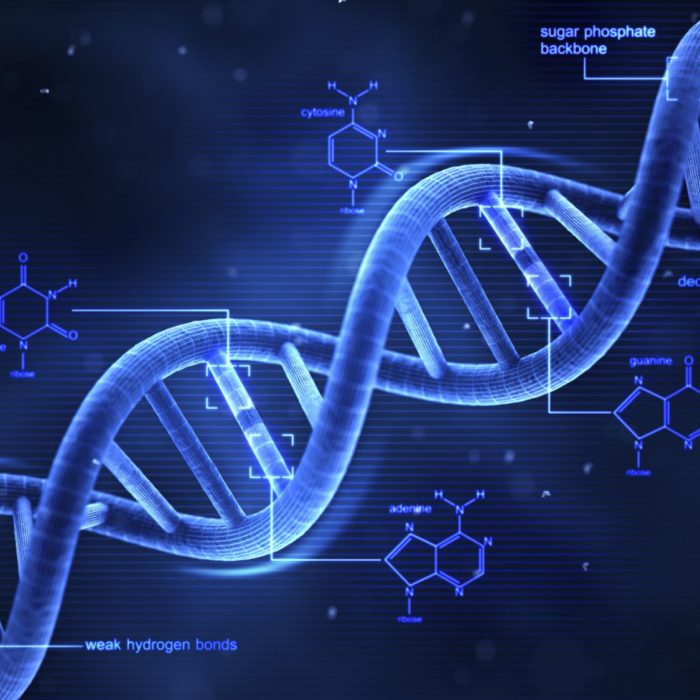 Carbon is an extremely useful element. Carbon-containing compounds can be food, fuel, fertilizer, or building material. We also have an overabundance of carbon in the form of CO2 in the atmosphere, with industry producing over 34 billion tons per year. This is why one of the current technological “holy grails” is to develop a cost and energy efficient method of recapturing that carbon and feeding it into a useful production stream at industrial scale. This way a pollutant can be turned into product.
Carbon is an extremely useful element. Carbon-containing compounds can be food, fuel, fertilizer, or building material. We also have an overabundance of carbon in the form of CO2 in the atmosphere, with industry producing over 34 billion tons per year. This is why one of the current technological “holy grails” is to develop a cost and energy efficient method of recapturing that carbon and feeding it into a useful production stream at industrial scale. This way a pollutant can be turned into product.
The problem is that CO2 is a stable molecule, and so it costs a lot of energy to break it apart – reversing reactions that produce the energy in the first place. Specifically, we need to split one oxygen off the CO2 to make CO (carbon monoxide). CO can be used in a variety of useful chemical reactions, making hydrocarbons, for example. The way to make reactions happen on useful industrial scales is with catalysts – a molecule that makes a reaction go faster (often by orders of magnitude). Of course the reaction also requires energy, because we want to go from a low energy molecule (CO2) to higher energy molecules (CO and O2). The challenge has been bringing all these elements together.
A new study introduces a new element into the equation – DNA. This may seem counterintuitive at first, but it makes sense when you put the whole picture together. Researchers at MIT were trying to crack this very specific problem – how do they bring together CO2 dissolved in liquid with a catalyst on the surface of an electrode that will be providing the energy? All these elements need to come together in the most efficient way. Further, catalysts can tend to break down with use, and we also need to get the old catalysts off the electrode and replace them with fresh catalyst. You can do this just by diffusing CO2 and catalyst in the liquid with the electrode and let randomness get it done, but this is highly inefficient, and efficiency is the game.
Continue Reading »
Sep
19
2022
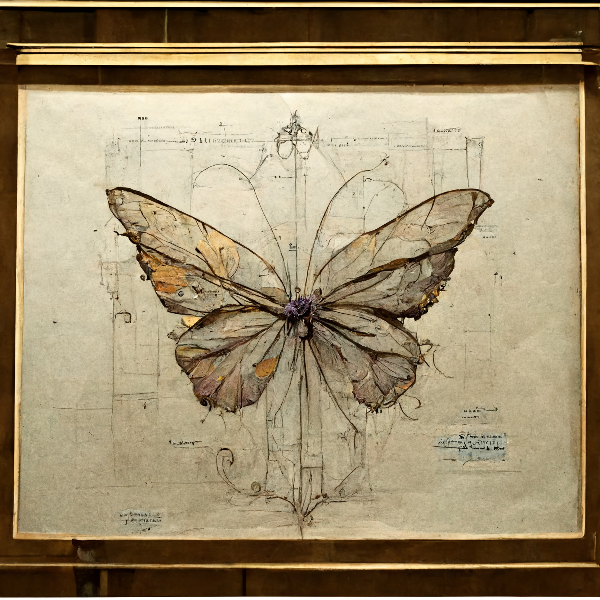 One of the things I enjoy about writing this blog is that it is a conversation. My essay is often just the opening salvo in what turns into an interesting exchange on the topic, and I often learn new facts, gain deeper insight, and if nothing else get better at communicating my ideas. This is why I have a high tolerance for commenters with very different views. I do get rid of the worst trolls that I find are destructive to the conversation, but as my regular commenters know, I set a pretty high bar. I do recommend everyone try to engage meaningfully with other commenters and not just try to “win” with snark and insults. If we all agreed here, the comments would be pretty boring.
One of the things I enjoy about writing this blog is that it is a conversation. My essay is often just the opening salvo in what turns into an interesting exchange on the topic, and I often learn new facts, gain deeper insight, and if nothing else get better at communicating my ideas. This is why I have a high tolerance for commenters with very different views. I do get rid of the worst trolls that I find are destructive to the conversation, but as my regular commenters know, I set a pretty high bar. I do recommend everyone try to engage meaningfully with other commenters and not just try to “win” with snark and insults. If we all agreed here, the comments would be pretty boring.
Sometimes, however, I feel like I have enough to say in response to the comments that a follow up post is warranted. The conversation about AI art is one of those times, partly because the conversation focused on elements of my post that I feel were ancillary. My post was not really about art. It was about how we respond to disruptive technology, and one way in which some technologies are disruptive. Specifically some technologies automate the technical aspects of creation, rendering obsolete (or at least to a much diminished role) entire sets of skills. My three examples were woodworking, photography, and the recent AI algorithms that can generate art.
In response some commenters noted that crafting a chair from wood is not art. Unfortunately this lead to a discussion about “what is art”, which is interesting, but entirely misses the point. That was not the analogy, and crafting furniture does not have to be art for my analogy to hold. The point was, that a profession of skilled artisans was essentially rendered obsolete by modern technology. Sure, there are people who keep this craft alive, and there is a high-end market for hand-crafted items. But the industry has fundamentally changed. A 19th century woodworker would have a hard time finding employment outside a historical village.
Continue Reading »
Sep
16
2022
 It is difficult to project costs into the future, because there are many variables and small errors magnify over time. But still, statistical modeling can be done and validated to produce reliable estimates that can at least inform our discussion. There have been many methods of modeling the cost of global warming vs the cost of transitioning to net-zero carbon. In general they find that, while there will be costs to transitioning to green technology, there will also be overall savings from reducing global warming.
It is difficult to project costs into the future, because there are many variables and small errors magnify over time. But still, statistical modeling can be done and validated to produce reliable estimates that can at least inform our discussion. There have been many methods of modeling the cost of global warming vs the cost of transitioning to net-zero carbon. In general they find that, while there will be costs to transitioning to green technology, there will also be overall savings from reducing global warming.
A new study takes a different approach from previous one – they do not consider the effects of global warming at all, but rather only consider the cost of energy itself. This is basically an ROI approach – we will need to invest a lot of money in new infrastructure, but as a result we will have cheaper electricity, so how does that net out. The bottom line is that under every scenario they consider, transitioning to green energy technologies will save billions of dollars per year in energy costs, and trillions over the entire transition. But let’s look at some of the variables they have to consider.
One thing they did different than prior economic analyses was to try to more accurately model the future costs of green technologies (wind, solar, batteries). Other studies take a conservative approach, but they have all underestimated the decreasing costs of these technologies. So the researchers in the new study more accurately modeled past predictions compared to actual costs and came up with a more accurate model that they validated with historical data. More accurately modeling the likely future decrease in the costs of these technologies increased the likely savings from transitioning to them.
Continue Reading »
Sep
15
2022
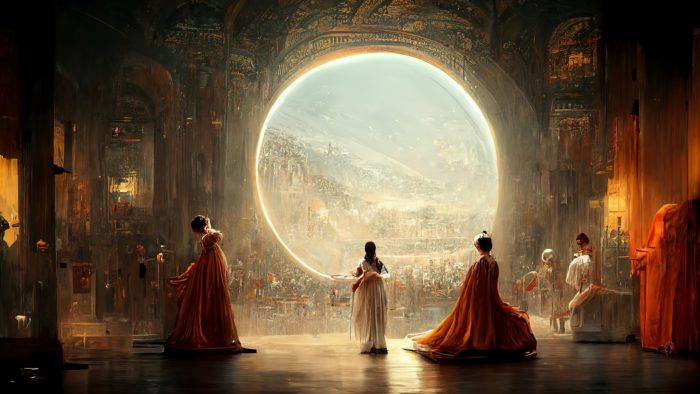 Recently an artist names Jason Allen won the Colorado State Art Fair’s competition in the category of digital art with a picture (shown) that was created by an AI, the Midjourney software. This has triggered another round of angst over computers taking our jobs. Some have declared it the end of art, or that it will destroy the jobs of working artists. This development can certainly be a job-killer, but we have to get over it. This, in my opinion, is just an extension of the advance of technology, which ruthlessly destroys jobs while creating new jobs and opportunities. We should not waste a moment shedding tears about those lost jobs, but rather put our energy into adapting to the new reality.
Recently an artist names Jason Allen won the Colorado State Art Fair’s competition in the category of digital art with a picture (shown) that was created by an AI, the Midjourney software. This has triggered another round of angst over computers taking our jobs. Some have declared it the end of art, or that it will destroy the jobs of working artists. This development can certainly be a job-killer, but we have to get over it. This, in my opinion, is just an extension of the advance of technology, which ruthlessly destroys jobs while creating new jobs and opportunities. We should not waste a moment shedding tears about those lost jobs, but rather put our energy into adapting to the new reality.
I do think it is reasonable to consider AI artists as just another form of automation and using tools to enhance our ability to create stuff. We can go back to just before the industrial revolution, when, for example, a highly skilled wood worker would make a chair entirely by hand. Even by then automation had had an effect – a productive shop would likely have an assembly line where specialists focused on different aspects of making the chair. Lathes and other tools were used to speed the process and improve precision, but still a great deal of technical skill, developed over years, was required. But soon the job of the highly skilled woodworker would be destroyed (outside of historical theme parks) by machines. A high-quality wooden chair can be made without the need of a single skilled woodworker, assembled by people who only need the skill to operate the machinery. At the time such products were denigrated as cheap knockoffs for the masses.
There are countless such examples. Getting closer to the artistic realm – do you take photographs with either your phone or a dedicated camera? Do you manually set the ISO, f-stop, aperture setting, or measure ambient light levels? Unless you are a professional photographer, the answer is likely no. Computer chips in the camera can do all of that for you. Even professional photographers will use these automated features – they rarely will measure light levels, for example, but let the camera do it. The point is that technology has reduced the technical skill necessary to take a good picture. Now, all you have to do is focus on the composition – the more artistic and creative aspects of photography.
Continue Reading »
Sep
13
2022
 There is ongoing debate as to the extent that a skeptical outlook is natural vs learned in humans. There is no simple answer to this question, and human psychology is complex and multifaceted. People do demonstrate natural skepticism toward many claims, and yet seem to accept with abject gullibility other claims. For adults it can also be difficult to tease out how much skepticism is learned vs innate.
There is ongoing debate as to the extent that a skeptical outlook is natural vs learned in humans. There is no simple answer to this question, and human psychology is complex and multifaceted. People do demonstrate natural skepticism toward many claims, and yet seem to accept with abject gullibility other claims. For adults it can also be difficult to tease out how much skepticism is learned vs innate.
This is where developmental psychology comes in. We can examine children of various ages to see how they behave, and this may provide a window into natural human behavior. Of course, even young children are not free from cultural influences, but it at least can provide some interesting information. A recent study looked at two related questions – to children (ages 4-7) accept surprising claims from adults, and how do they react to those claims. A surprising claim is one that contradicts common knowledge that even a 4-year old should know.
In one study, for example, an adult showed the children a rock and a sponge and asked them if the rock was soft or hard. The children all believed the rock was hard. The adult then either told them that the rock was hard, or that the rock was soft (or in one iteration that the rock was softer than the sponge). When the adult confirmed the children’s beliefs, they continued in their belief. When the adult contradicted their belief, many children modified their belief. The adult then left the room under a pretense, and the children were observed through video. Unsurprisingly, they generally tested the surprising claims of the teacher through direct exploration.
This is not surprising – children generally like to explore and to touch things. However, the 6-7 year-old engaged in (or proposed during online versions of the testing) more appropriate and efficient methods of testing surprising claims than the 4-5 year-olds. For example, they wanted to directly compare the hardness of the sponge vs the rock.
Continue Reading »
Sep
12
2022
 Research into conspiracy beliefs reveals that there are basically two kinds of people who believe in conspiracies. One type is the dedicated conspiracy theorist. For them, the conspiracy is what they are interested in. They never met a conspiracy theory they didn’t like, and they believe pretty much all of them. It’s part of their cognitive makeup. Others, however, are opportunistic conspiracy theorists – they believe one or two conspiracies that align with their ideology or tribe. Rosie O-Donnell is a 9/11 truther probably because it aligns with her politics. (As and aside, I can’t help thinking of her “fire melt steel” quote every time I see someone burn their steel on Forged in Fire.)
Research into conspiracy beliefs reveals that there are basically two kinds of people who believe in conspiracies. One type is the dedicated conspiracy theorist. For them, the conspiracy is what they are interested in. They never met a conspiracy theory they didn’t like, and they believe pretty much all of them. It’s part of their cognitive makeup. Others, however, are opportunistic conspiracy theorists – they believe one or two conspiracies that align with their ideology or tribe. Rosie O-Donnell is a 9/11 truther probably because it aligns with her politics. (As and aside, I can’t help thinking of her “fire melt steel” quote every time I see someone burn their steel on Forged in Fire.)
We are now facing a new conspiracy that largely follows the opportunistic paradigm, the notion that the 2020 election was stolen from Trump due to massive coordinated voter fraud. Persistently, surveys show that about 70% of Republicans feel that Biden was not legitimately elected. This is still a minority of Americans, about 30% total, but it represents a substantial political movement. The reasons for the popularity of this conspiracy theory are complex and debated, including a general rise in conspiracy claims surrounding elections (on both sides), the closeness of the election, the fact of the “red mirage” that was later wiped away, and of course the fact that Trump himself has been vehemently promoting the “big lie”.
I would note, however, that belief in conspiracies itself is not increasing over time. A recent study shows that conspiracy belief is essentially flat over long periods of time. The stolen election is a blip, an anomaly caused by the factors I listed above. I also note that while doubt in election results has been increasing over the last two decades, the 2020 stolen election belief is of an entirely different order of magnitude. This is not just some whining on the fringe – this is now a core political movement.
Continue Reading »
Sep
09
2022
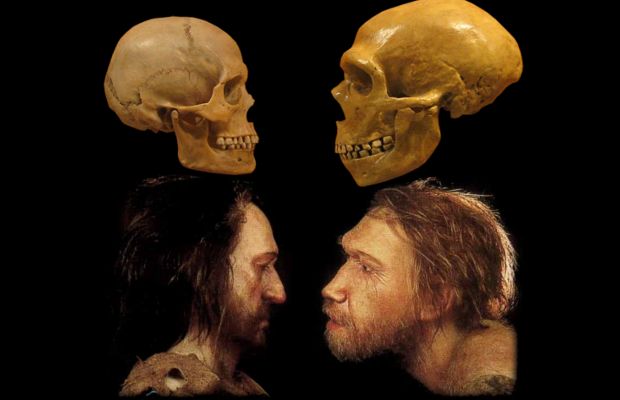 Neanderthals (Homo neanderthalensis) is the closest evolutionary cousin to modern humans (Homo sapiens). In fact they are so close there has been some debate about whether or not they are truly a separate species from humans or if they are a subspecies (Homo sapiens neanderthalensis), but it seems the consensus has moved toward the former recently. They are not our ancestors – humans did not evolve from Neanderthals (anymore than we evolved from modern Chimps). Rather, we share a common ancestor with Neanderthals, about 700,000 years ago.
Neanderthals (Homo neanderthalensis) is the closest evolutionary cousin to modern humans (Homo sapiens). In fact they are so close there has been some debate about whether or not they are truly a separate species from humans or if they are a subspecies (Homo sapiens neanderthalensis), but it seems the consensus has moved toward the former recently. They are not our ancestors – humans did not evolve from Neanderthals (anymore than we evolved from modern Chimps). Rather, we share a common ancestor with Neanderthals, about 700,000 years ago.
Neanderthals dominated in Europe from about 400,000 to 40,000 years ago, with their close relatives, the Denisovans, in Asia. They existed alongside modern humans for a long time, but then disappeared. There is probably no single simple reason why this occurred. There were likely many factors – some competition, some interbreeding, and independent reasons for Neanderthal decline that perhaps had nothing to do with humans. But as part of this question is the distinct but related one of – are modern humans somehow inherently superior to Neanderthals? Did we outcompete them because we were better?
This is a difficult question to answer from fossil evidence alone. Neanderthals were more robust than humans, and had brains which were as large (for body weight, meaning they were actually a bit bigger). Perhaps the replacement of Neanderthals by humans was a lateral move. Or perhaps Neanderthals were better adapted to the European ice age, and modern humans had the edge in warmer climates.
But there is a more direct question than ultimate evolutionary forces – were modern humans smarter than Neanderthals? To answer this question we can use biological evidence or cultural evidence. I will get to the biological evidence second, discussing a recent study that may shed significant light on the question. But first let’s look at the cultural evidence.
Continue Reading »
 By now you have likely seen the images of NASA’s DART spacecraft smashing into the asteroid, Dimorphos, a small asteroid in orbit around a larger asteroid, Didymos. Here is the streaming video from DART itself, showing right up to the moment of impact. Many telescopes were focused on this event, including (for the first time) both the Webb and Hubble space-based telescopes. Why did NASA deliberately crash a spacecraft?
By now you have likely seen the images of NASA’s DART spacecraft smashing into the asteroid, Dimorphos, a small asteroid in orbit around a larger asteroid, Didymos. Here is the streaming video from DART itself, showing right up to the moment of impact. Many telescopes were focused on this event, including (for the first time) both the Webb and Hubble space-based telescopes. Why did NASA deliberately crash a spacecraft?
 Examining the history and fate of many technologies, and reading the analyses of others, I have come to understand some general rules, one of which is that some technologies look great on paper, but are terrible in reality. The reason they look so promising at first is because they have some key advantage that just seems to make sense. Using hydrogen as an energy storage medium, I think, is one of those technologies (at least for some applications). The idea of hydrogen is very appealing – it can be stored as a gas, transported in pipelines, and burned for energy, combining with oxygen to make water as the only combustion product. No CO2 or other greenhouse gas is produced. That sounds really good. But the more you crunch the numbers, the less good hydrogen looks (at least with current technology).
Examining the history and fate of many technologies, and reading the analyses of others, I have come to understand some general rules, one of which is that some technologies look great on paper, but are terrible in reality. The reason they look so promising at first is because they have some key advantage that just seems to make sense. Using hydrogen as an energy storage medium, I think, is one of those technologies (at least for some applications). The idea of hydrogen is very appealing – it can be stored as a gas, transported in pipelines, and burned for energy, combining with oxygen to make water as the only combustion product. No CO2 or other greenhouse gas is produced. That sounds really good. But the more you crunch the numbers, the less good hydrogen looks (at least with current technology).  We appear to be in the middle of an explosion of AI (artificial intelligence) applications and ability. I had the opportunity to chat with an AI expert, Mark Ho, about what the driving forces are behind this rapid increase in AI power.
We appear to be in the middle of an explosion of AI (artificial intelligence) applications and ability. I had the opportunity to chat with an AI expert, Mark Ho, about what the driving forces are behind this rapid increase in AI power.  Carbon is an extremely useful element. Carbon-containing compounds can be food, fuel, fertilizer, or building material. We also have an overabundance of carbon in the form of CO2 in the atmosphere, with industry producing over 34 billion tons per year. This is why one of the current technological “holy grails” is to develop a cost and energy efficient method of recapturing that carbon and feeding it into a useful production stream at industrial scale. This way a pollutant can be turned into product.
Carbon is an extremely useful element. Carbon-containing compounds can be food, fuel, fertilizer, or building material. We also have an overabundance of carbon in the form of CO2 in the atmosphere, with industry producing over 34 billion tons per year. This is why one of the current technological “holy grails” is to develop a cost and energy efficient method of recapturing that carbon and feeding it into a useful production stream at industrial scale. This way a pollutant can be turned into product. One of the things I enjoy about writing this blog is that it is a conversation. My essay is often just the opening salvo in what turns into an interesting exchange on the topic, and I often learn new facts, gain deeper insight, and if nothing else get better at communicating my ideas. This is why I have a high tolerance for commenters with very different views. I do get rid of the worst trolls that I find are destructive to the conversation, but as my regular commenters know, I set a pretty high bar. I do recommend everyone try to engage meaningfully with other commenters and not just try to “win” with snark and insults. If we all agreed here, the comments would be pretty boring.
One of the things I enjoy about writing this blog is that it is a conversation. My essay is often just the opening salvo in what turns into an interesting exchange on the topic, and I often learn new facts, gain deeper insight, and if nothing else get better at communicating my ideas. This is why I have a high tolerance for commenters with very different views. I do get rid of the worst trolls that I find are destructive to the conversation, but as my regular commenters know, I set a pretty high bar. I do recommend everyone try to engage meaningfully with other commenters and not just try to “win” with snark and insults. If we all agreed here, the comments would be pretty boring. It is difficult to project costs into the future, because there are many variables and small errors magnify over time. But still, statistical modeling can be done and validated to produce reliable estimates that can at least inform our discussion.
It is difficult to project costs into the future, because there are many variables and small errors magnify over time. But still, statistical modeling can be done and validated to produce reliable estimates that can at least inform our discussion.  Recently an artist names Jason Allen
Recently an artist names Jason Allen  There is ongoing debate as to the extent that a skeptical outlook is natural vs learned in humans. There is no simple answer to this question, and human psychology is complex and multifaceted. People do demonstrate natural skepticism toward many claims, and yet seem to accept with abject gullibility other claims. For adults it can also be difficult to tease out how much skepticism is learned vs innate.
There is ongoing debate as to the extent that a skeptical outlook is natural vs learned in humans. There is no simple answer to this question, and human psychology is complex and multifaceted. People do demonstrate natural skepticism toward many claims, and yet seem to accept with abject gullibility other claims. For adults it can also be difficult to tease out how much skepticism is learned vs innate. Research into conspiracy beliefs reveals that there are basically two kinds of people who believe in conspiracies. One type is the dedicated conspiracy theorist. For them, the conspiracy is what they are interested in. They never met a conspiracy theory they didn’t like, and they believe pretty much all of them. It’s
Research into conspiracy beliefs reveals that there are basically two kinds of people who believe in conspiracies. One type is the dedicated conspiracy theorist. For them, the conspiracy is what they are interested in. They never met a conspiracy theory they didn’t like, and they believe pretty much all of them. It’s  Neanderthals (Homo neanderthalensis) is the closest evolutionary cousin to modern humans (Homo sapiens). In fact they are so close there has been some debate about whether or not they are truly a separate species from humans or if they are a subspecies (Homo sapiens neanderthalensis), but it seems the consensus has moved toward the former recently. They are not our ancestors – humans did not evolve from Neanderthals (anymore than we evolved from modern Chimps). Rather, we share a common ancestor with Neanderthals, about 700,000 years ago.
Neanderthals (Homo neanderthalensis) is the closest evolutionary cousin to modern humans (Homo sapiens). In fact they are so close there has been some debate about whether or not they are truly a separate species from humans or if they are a subspecies (Homo sapiens neanderthalensis), but it seems the consensus has moved toward the former recently. They are not our ancestors – humans did not evolve from Neanderthals (anymore than we evolved from modern Chimps). Rather, we share a common ancestor with Neanderthals, about 700,000 years ago.




